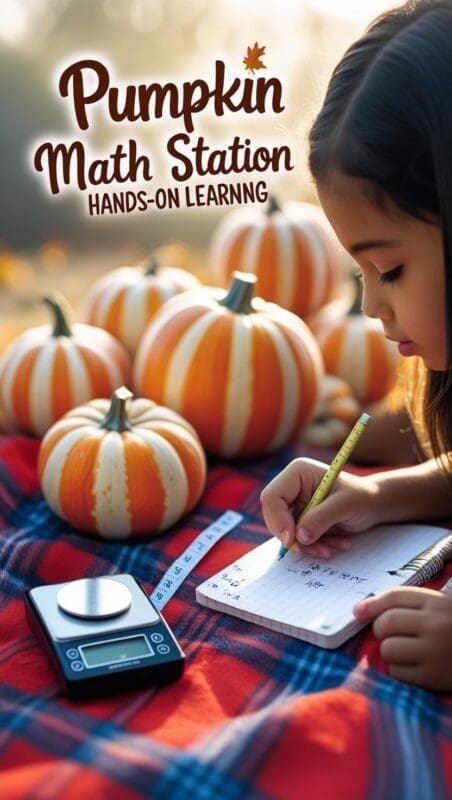The crunch of leaves under sneakers, the smell of sharpened pencils and cinnamon—autumn is storybook-perfect for learning. Last summer, our “camp activities” post went viral on Pinterest; this year we’re bringing that same magic into the schoolyard with fresh autumn classroom activities that fuse play, academics and seasonal wonder. From STEM leaf labs to kindness-pumpkin projects, these ideas make every lesson feel like a field trip.

Why Autumn Is a Golden Classroom Window
Outdoor learning boosts brains. Cooler temperatures and vibrant scenery encourage teachers to move lessons outside, and research from Teachers College Columbia University shows that outdoor experiential learning raises attention spans and emotional wellbeing.
Seasonal cues deepen memory. When a concept is tied to a multisensory experience—like measuring leaf symmetry or graphing acorn drops—students retain it up to 20 % longer.
Nature builds stewardship. A 2024 National Wildlife Federation review noted that outdoor activities foster environmental empathy and community connection.
Translation? Autumn isn’t just pretty; it’s pedagogical gold.
STEM Adventures Among the Leaves
1. Leaf-Vein STEM Lab
- Prep: Students collect five leaves during recess.
- Lab: Use magnifiers to map vein patterns, classify symmetry and estimate surface area.
- Why it works: Integrates botany, geometry and observation skills in one hands-on micro-lesson.
2. Acorn Drop Physics
- Attach string to acorns of different sizes and measure drop speed from playground climbing frame.
- Graph results: Does mass change terminal velocity?
3. Pumpkin-Patch Math Stations
Set up “stations” with small gourds: weigh, measure circumference, calculate volume, predict seed count, then verify by carving one pumpkin.
4. Weather-Tracking Barometer
Use mason jars, balloons and straws to build simple barometers; chart pressure versus playground temperature for two weeks.
Literacy & Art in Living Color
5. Sensory Haiku Walk
Take a silent ten-minute walk around campus; students jot sounds, colors and scents, then craft five-seven-five haiku back in class.
6. Leaf-Print Storyboards
Paint collected leaves with autumnal tones, press onto cardstock, and have kids imagine each print as a “scene” in a comic strip.
7. Shadow-Silhouette Murals
Use late-afternoon sun to trace classmates’ silhouettes on butcher paper, fill with collage leaves; discuss identity and seasonality.
Social-Emotional & Service Projects
8. Kindness Pumpkin Patch
Each student decorates a mini-pumpkin with one act of kindness written on the back; display grows all October, visually tracking good deeds.
9. Gratitude Leaf Garland
Paper leaves + clothespins = hallway garland of gratitude notes. Add one leaf daily; culminates in a “thanks parade” before break.
10. Harvest Food-Drive Graph
Collect canned goods for a local pantry and graph totals by class. Real-world math meets community impact.
Outdoor Games With a Learning Twist
11. Scavenger Hunt 2.0 – QR Code Edition
Hide QR codes around the school grounds. Each code reveals a nature trivia question; answering correctly gives the next clue.
12. Seed-Dispersal Relay
Teams mimic animals dispersing seeds—carry “acorn” beanbags via obstacle course—then reflect on ecosystem importance.
13. Leaf Pile Estimation Contest
Students rake leaves into piles, predict volume, then bag and weigh to check accuracy. Bonus: groundskeepers will love you.
Indoors When It Pours
14. Cinnamon-Stick Geometry
Hot-glue cinnamon sticks into polygons; measure angles, then wrap with yarn for aromatic ornaments.
15. Cozy Reading Forts
Allow blanket forts between desks for a 30-minute reading block; pair with ambient rain soundtrack.
16. Apple-Sauce Circuit Lab
Yes, apple sauce conducts electricity. Create simple circuits using copper tape and LEDs—fruit + physics = unforgettable.
Mindfulness & Reflection
17. Leaf-Breathing Exercise
Students hold a single leaf, trace its edges with a finger while inhaling and exhaling—teaches paced breathing and observation.
18. Nature Journaling Bench
Set up an “autumn observation bench” outdoors; journal prompts rotate weekly: bud scars, migrating birds, cloud shapes.
Putting It All Together: The Fall Learning Festival
End the season with a mini-festival: stations for pumpkin math, haiku open mic, food-drive weigh-in and a leaf-print gallery. Families visit, students lead activities, and the schoolyard becomes a carnival of knowledge.
Budget & Sustainability Tips
- Request leaf bags, gourds and cinnamon sticks via classroom donation list—parents often have extras.
- Laminate scavenger sheets for reuse; pair with dry-erase markers.
- Compost carved pumpkin scraps in a school garden or send home for backyard bins.
Key Takeaways
Autumn gives us ready-made lesson hooks—color, texture, nip-in-the-air excitement. Use these autumn classroom activities to anchor standards in real-world wonder, nurture stewardship and keep kids moving, thinking and laughing long after the last leaf falls.
Hungry for more seasonal magic? Dive into our Autumn Décor for Counselor Offices or plan ahead with our Winter Cozy Lighting Guide. See you under the sugar-maple canopy!
FAQ
How do I fit outdoor activities into a tight schedule?
Use recess or science blocks for 15-minute “micro adventures” like leaf vein mapping.
What if my school yard has few trees?
Bring the season indoors—pumpkins, acorns and store-bought leaves still provide multisensory cues.
How can I include students with limited mobility?
Adapt scavenger hunts with photo hunts or desk-based leaf-rubbing stations.
Is outdoor learning worth the classroom transition time?
Yes. Studies show it increases attention and reduces off-task behavior the rest of the day.
Can these ideas work for middle school?
Absolutely—just raise the rigor: calculate leaf fractals, build Arduino barometers, or run data analytics on food-drive graphs.

About the Author
Hi, I’m Eve, a former school counselor with a master’s degree in School Psychology and a passionate advocate for children and families navigating sensory challenges. As a mom of children with sensory sensitivities, I deeply understand the journey special-needs parents face, and I dedicate myself to researching and sharing practical solutions to help children thrive and feel comfortable in their bodies. My goal is also to empower counselors, therapists, and psychologists with creative strategies and supportive resources to enrich their everyday practice. When I’m not writing or exploring new therapeutic approaches, you’ll find me spending quality time with my family and continually seeking inspiration from everyday moments.


